 (by contributor John Bleimaier)…
(by contributor John Bleimaier)…
In the culinary world, salt is one of a few truly magical ingredients which release taste and enliven sensory responses without relying on artificial chemicals that are detrimental to the human body. Any chef that cares about the quality of the ingredients they use typically encourages the use of salt. Thanks to salt’s ability to keep food preserved longer, it was valued highly in ancient civilizations because it made long-distance transporting and long-term storage much easier. Salt was so revered that it was often used as currency – and the word “salary” is based on salt because workers would often be paid their wages in the form of salt.
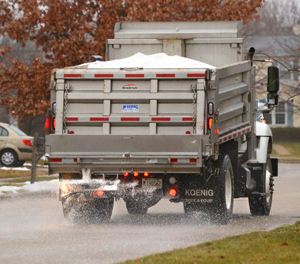 When that same sodium chloride is introduced into the automotive environment to keep roads clear during the winter, the wages of salt become detrimental corrosion. Over the last 100 years, salt has turned many works of automotive art into rusted pieces of junk, and it’s transformed the industrial heartland of the American northeast into “the rust belt”. To look at it another way, sodium chloride might be considered a poison which an ignorant government has administered to an unsuspecting world. While beautiful multicolored autumn leaves swirl in the wake of a classic 1970 Chevelle or 1988 560SL, the demon salt spreader is never far away – lurking in the shadows of a municipal garage poised to strike. And when the first white corrosive crystals hit the pavement, all automotive beauty and virtue must flee and seek refuge in winter storage in order to maintain their vanity and youthful good looks. While I curse road salt with a passion, my animosity isn’t born of ignorance or prejudice. Salt on the roads is an objective evil, worthy of our concerted efforts to banish it forever.
When that same sodium chloride is introduced into the automotive environment to keep roads clear during the winter, the wages of salt become detrimental corrosion. Over the last 100 years, salt has turned many works of automotive art into rusted pieces of junk, and it’s transformed the industrial heartland of the American northeast into “the rust belt”. To look at it another way, sodium chloride might be considered a poison which an ignorant government has administered to an unsuspecting world. While beautiful multicolored autumn leaves swirl in the wake of a classic 1970 Chevelle or 1988 560SL, the demon salt spreader is never far away – lurking in the shadows of a municipal garage poised to strike. And when the first white corrosive crystals hit the pavement, all automotive beauty and virtue must flee and seek refuge in winter storage in order to maintain their vanity and youthful good looks. While I curse road salt with a passion, my animosity isn’t born of ignorance or prejudice. Salt on the roads is an objective evil, worthy of our concerted efforts to banish it forever.
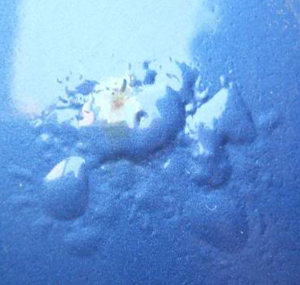 It is true that classic cars are more prone to show the ravages of the hateful brine mixture than ones built since 1990 or so. When iron in steel body panels combines with oxygen in the air, moisture, and salt, a chemical reaction occurs which creates iron oxide molecules. Because these molecules take up more space than plain old iron atoms, the metal starts to push apart from the expansion that’s taking place. Churlish bubbling under the paint, plague-like reddish discoloration, and lockjaw-like seizure of nuts and bolts which should turn freely are palpable symptoms of the dreaded cancer brought about by salt. While contemporary vehicles built with electrolytic and galvanic wizardry manage to stave off the wasting illness of rust, it’s only for a time. While it may take a decade to become visible on today’s cars, the grim reaper is at his hateful work. When the corrosion at last rears its ugly head, the battle is lost for whoever owns the vehicle at that time. The innards of the automobile are already spoiled and desiccated with corruption.
It is true that classic cars are more prone to show the ravages of the hateful brine mixture than ones built since 1990 or so. When iron in steel body panels combines with oxygen in the air, moisture, and salt, a chemical reaction occurs which creates iron oxide molecules. Because these molecules take up more space than plain old iron atoms, the metal starts to push apart from the expansion that’s taking place. Churlish bubbling under the paint, plague-like reddish discoloration, and lockjaw-like seizure of nuts and bolts which should turn freely are palpable symptoms of the dreaded cancer brought about by salt. While contemporary vehicles built with electrolytic and galvanic wizardry manage to stave off the wasting illness of rust, it’s only for a time. While it may take a decade to become visible on today’s cars, the grim reaper is at his hateful work. When the corrosion at last rears its ugly head, the battle is lost for whoever owns the vehicle at that time. The innards of the automobile are already spoiled and desiccated with corruption.
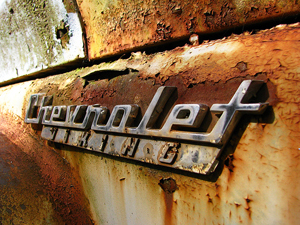 Long term, galvanized steel and clever alloys aren’t a cure all. Thus you, on the rapturous honeymoon of new car ownership, delude yourself unless you realize that salt is from the first day of exposure cruelly rending the inmost organs and most intimate charms of your beloved. The effectiveness of road salt varies depending on temperature, and its effectiveness at keeping ice in water form diminishes completely at 15 degrees Fahrenheit. So at warmer temperatures, a little salt melts a lot of ice. And at low temperatures, a lot of salt only melts a little ice.
Long term, galvanized steel and clever alloys aren’t a cure all. Thus you, on the rapturous honeymoon of new car ownership, delude yourself unless you realize that salt is from the first day of exposure cruelly rending the inmost organs and most intimate charms of your beloved. The effectiveness of road salt varies depending on temperature, and its effectiveness at keeping ice in water form diminishes completely at 15 degrees Fahrenheit. So at warmer temperatures, a little salt melts a lot of ice. And at low temperatures, a lot of salt only melts a little ice.
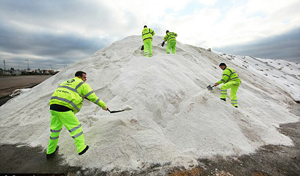 Below 15 degrees F, more effective and caustic de-icers like magnesium chloride or calcium chloride are used that can work down to well below zero Fahrenheit. So basically the lower the outside temperatures are where you live, the stronger the rust-causing chemical mixtures end up being. The chemical rusting process doesn’t take place until 40 degrees Fahrenheit or higher, so keeping your salt-covered vehicle inside a nice warm garage actually does more harm than good.
Below 15 degrees F, more effective and caustic de-icers like magnesium chloride or calcium chloride are used that can work down to well below zero Fahrenheit. So basically the lower the outside temperatures are where you live, the stronger the rust-causing chemical mixtures end up being. The chemical rusting process doesn’t take place until 40 degrees Fahrenheit or higher, so keeping your salt-covered vehicle inside a nice warm garage actually does more harm than good.
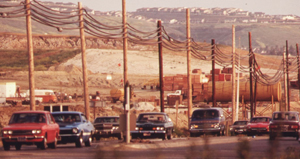 It’s easy to take the effect of rust for granted and forget that things don’t need to be this way. A northerner from a rust belt state visiting a warm part of the country where there is no snow is in for an eye-opener. For example, southern California is literally full of old, battered Volkswagen Beetles and Ford Mustangs of 1960s and ’70s vintage still roaming the streets as daily drivers. Plus, it’s easy to find oddball cars still alive there that haven’t been seen since childhood. All of these disappeared from the roads back home decades ago – the victims of automotive cancer.
It’s easy to take the effect of rust for granted and forget that things don’t need to be this way. A northerner from a rust belt state visiting a warm part of the country where there is no snow is in for an eye-opener. For example, southern California is literally full of old, battered Volkswagen Beetles and Ford Mustangs of 1960s and ’70s vintage still roaming the streets as daily drivers. Plus, it’s easy to find oddball cars still alive there that haven’t been seen since childhood. All of these disappeared from the roads back home decades ago – the victims of automotive cancer.
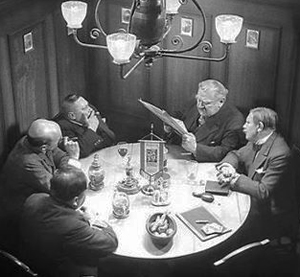 Have you ever noticed how eager politicians and city officials are to spread the salt upon the road at the first cold gusts of wintry wind? It might be natural to think they are concerned with your safety and well being at first, but realizing just how lucrative a business the procurement of road salt is will make you realize how naive that notion is. Furthermore, the contracting for its dissemination is rife with most foul patronage. Yes, road salt not only corrodes your car – it corrupts the body politic. Next time you see the political appointees or their surrogates spreading the sodium chloride think of the red ink of the municipal ledgers and the green hemorrhaging from your bank account with wasted tax dollars.
Have you ever noticed how eager politicians and city officials are to spread the salt upon the road at the first cold gusts of wintry wind? It might be natural to think they are concerned with your safety and well being at first, but realizing just how lucrative a business the procurement of road salt is will make you realize how naive that notion is. Furthermore, the contracting for its dissemination is rife with most foul patronage. Yes, road salt not only corrodes your car – it corrupts the body politic. Next time you see the political appointees or their surrogates spreading the sodium chloride think of the red ink of the municipal ledgers and the green hemorrhaging from your bank account with wasted tax dollars.
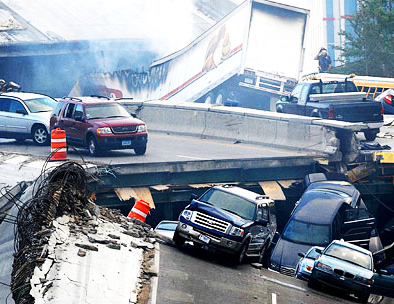 And what of society’s costly infrastructure? Roads, bridges, storm sewers, all these are ravaged by road salt. Works of civil engineering genius that might have survived like the Pyramids are laid waste within a cosmic fortnight. This enormously increases the cost of government and provides yet another avenue for unscrupulous politicians and their cohorts to suck the life blood of a supine electorate. Furthermore, in recent years we have heard many examples of vehicular accidents and loss of life that can be attributed to crumbling bridges and roads? Road salt worms its way into the retaining skeletons of critical structures – bringing them crashing down, almost without warning.
And what of society’s costly infrastructure? Roads, bridges, storm sewers, all these are ravaged by road salt. Works of civil engineering genius that might have survived like the Pyramids are laid waste within a cosmic fortnight. This enormously increases the cost of government and provides yet another avenue for unscrupulous politicians and their cohorts to suck the life blood of a supine electorate. Furthermore, in recent years we have heard many examples of vehicular accidents and loss of life that can be attributed to crumbling bridges and roads? Road salt worms its way into the retaining skeletons of critical structures – bringing them crashing down, almost without warning.
It is not only the timid who fear for the future in a world of environmental contamination. Sodium chloride which is spread on the roads finds its way into our ground water where it’s extremely harmful to flora and fauna alike. The next victim will surely be drinking water.
 One of the largest causes of single car accident fatalities is the presence of salt-craving wildlife close to the side of the road. If you’ve ever wondered why deer gather by the side of the road when there is far less-threatening landscape to roam, the answer is road salt. Deer, moose, and other wild animals savor the taste of grasses and plants along the side of the road which have been salted by the spreader trucks. That’s why it’s so easy to find them concentrated there – and why it’s so easy to have a deadly catastrophe as a result.
One of the largest causes of single car accident fatalities is the presence of salt-craving wildlife close to the side of the road. If you’ve ever wondered why deer gather by the side of the road when there is far less-threatening landscape to roam, the answer is road salt. Deer, moose, and other wild animals savor the taste of grasses and plants along the side of the road which have been salted by the spreader trucks. That’s why it’s so easy to find them concentrated there – and why it’s so easy to have a deadly catastrophe as a result.
In other parts of the world folks use sand in order to provide traction on ice and snow. Of course, in an era when full-time all-wheel-drive and part-time four-wheel-drive systems are commonplace, frozen precipitation should be an ever declining cause of concern. Furthermore, making skid pad training a central component of mandatory, universal drivers education would go a long way toward increasing winter driving safety.
 -John
-John
(Contributor John Bleimaier is an attorney at law, active Mercedes-Benz club officer, and automotive journalist for The Star magazine.)
 1969 Volkswagen Karmann Ghia wheelPhoto: Genna Rae
1969 Volkswagen Karmann Ghia wheelPhoto: Genna Rae 1969 Volkswagen Karmann GhiaPhoto: Genna Rae
1969 Volkswagen Karmann GhiaPhoto: Genna Rae 50s Calnevar aftermarket hubcaps shPhoto credit: T. Gorski
50s Calnevar aftermarket hubcaps shPhoto credit: T. Gorski Chrysler LeBaron Town & Country wheel cover
Chrysler LeBaron Town & Country wheel cover Cadillac Eldorado painted wheel cover 1976-78Photo: Nate Smith
Cadillac Eldorado painted wheel cover 1976-78Photo: Nate Smith 1974 - 1976 Lincoln Continental wheel coverPhoto credit: H. Carver
1974 - 1976 Lincoln Continental wheel coverPhoto credit: H. Carver 1969 Oldsmobile Cutlass Supreme rallye wheelPhoto: C. DeMarco
1969 Oldsmobile Cutlass Supreme rallye wheelPhoto: C. DeMarco Chrysler 1980s painted wheel coverPhoto: O. Stein
Chrysler 1980s painted wheel coverPhoto: O. Stein 13-inch General Motors color matched wheel 1975-80Photo: Valley Ride Styles
13-inch General Motors color matched wheel 1975-80Photo: Valley Ride Styles Audi TT RS wheelPhoto: Sean Connor
Audi TT RS wheelPhoto: Sean Connor 1994 - 1995 Mercedes E320 Cabriolet wheel
1994 - 1995 Mercedes E320 Cabriolet wheel 2012 Volkswagen Beetle 2.5 standard wheel
2012 Volkswagen Beetle 2.5 standard wheel 16-inch black steel Land Rover off-road wheelsPhoto credit: J. Getty
16-inch black steel Land Rover off-road wheelsPhoto credit: J. Getty 18-inch aluminum wheel on 2003 - 2004 Land Rover Discovery HSE
18-inch aluminum wheel on 2003 - 2004 Land Rover Discovery HSE 18 inch "Hurricane" aluminum wheel standard on 2002-2004 Discovery SE
18 inch "Hurricane" aluminum wheel standard on 2002-2004 Discovery SE 1957 - 1958 Pontiac wire wheel cover(Photo credit: R. Ulrich)
1957 - 1958 Pontiac wire wheel cover(Photo credit: R. Ulrich) 1972 Mercedes 280SE 4.5 equipped with repro 15-inch alloy wheels(Photo credit: Sean Connor)
1972 Mercedes 280SE 4.5 equipped with repro 15-inch alloy wheels(Photo credit: Sean Connor) 560SL 15-inch aluminum wheel
560SL 15-inch aluminum wheel 1981 Porsche 924 Carrera GT aluminum wheel
1981 Porsche 924 Carrera GT aluminum wheel 1978 Lincoln Mark V DJ blue wheel b(Photo credit: M. Garrett)
1978 Lincoln Mark V DJ blue wheel b(Photo credit: M. Garrett) 1979 Lincoln Mark V Collectors Series navy blue painted wheel(Photo credit: M. Garrett)
1979 Lincoln Mark V Collectors Series navy blue painted wheel(Photo credit: M. Garrett) 1969 Dodge Charger RT Hemi wheel with center hub cap
1969 Dodge Charger RT Hemi wheel with center hub cap 1953 Oldsmobile wire-wheel
1953 Oldsmobile wire-wheel 2014 Jaguar XK RS GT wheel at the 2013 New York Auto Show(Photo credit: Sean Connor)
2014 Jaguar XK RS GT wheel at the 2013 New York Auto Show(Photo credit: Sean Connor) 2014 Mercedes CLA45 AMG wheel at the 2013 New York Auto Show(Photo credit: Sean Connor)
2014 Mercedes CLA45 AMG wheel at the 2013 New York Auto Show(Photo credit: Sean Connor) 2013 Subaru WRX concept wheel at the 2013 New York Auto Show
2013 Subaru WRX concept wheel at the 2013 New York Auto Show 1952 Volkswagen wheelPhoto credit: L. Jacobs
1952 Volkswagen wheelPhoto credit: L. Jacobs 1975 Pontiac Grand Ville rallye wheelPhoto credit: Sean Connor
1975 Pontiac Grand Ville rallye wheelPhoto credit: Sean Connor 1991 Cadillac Fleetwood Brougham wire wheel cover
1991 Cadillac Fleetwood Brougham wire wheel cover Dodge Charger all-black police car wheel a
Dodge Charger all-black police car wheel a Dodge Charger all-black police car wheel b
Dodge Charger all-black police car wheel b 1963 Mercedes 230SL wheel at the 2013 June Jamboree in Montvale, NJPhoto: Sean Connor
1963 Mercedes 230SL wheel at the 2013 June Jamboree in Montvale, NJPhoto: Sean Connor 1964 Mercedes 230SL wheel at the 2013 Mercedes-Benz June JamboreePhoto: Kristi Burns
1964 Mercedes 230SL wheel at the 2013 Mercedes-Benz June JamboreePhoto: Kristi Burns
Commentary – Road salt not only corrodes your classic car, but politicians as well
In the culinary world, salt is one of a few truly magical ingredients which release taste and enliven sensory responses without relying on artificial chemicals that are detrimental to the human body. Any chef that cares about the quality of the ingredients they use typically encourages the use of salt. Thanks to salt’s ability to keep food preserved longer, it was valued highly in ancient civilizations because it made long-distance transporting and long-term storage much easier. Salt was so revered that it was often used as currency – and the word “salary” is based on salt because workers would often be paid their wages in the form of salt.
It is not only the timid who fear for the future in a world of environmental contamination. Sodium chloride which is spread on the roads finds its way into our ground water where it’s extremely harmful to flora and fauna alike. The next victim will surely be drinking water.
In other parts of the world folks use sand in order to provide traction on ice and snow. Of course, in an era when full-time all-wheel-drive and part-time four-wheel-drive systems are commonplace, frozen precipitation should be an ever declining cause of concern. Furthermore, making skid pad training a central component of mandatory, universal drivers education would go a long way toward increasing winter driving safety.
(Contributor John Bleimaier is an attorney at law, active Mercedes-Benz club officer, and automotive journalist for The Star magazine.)